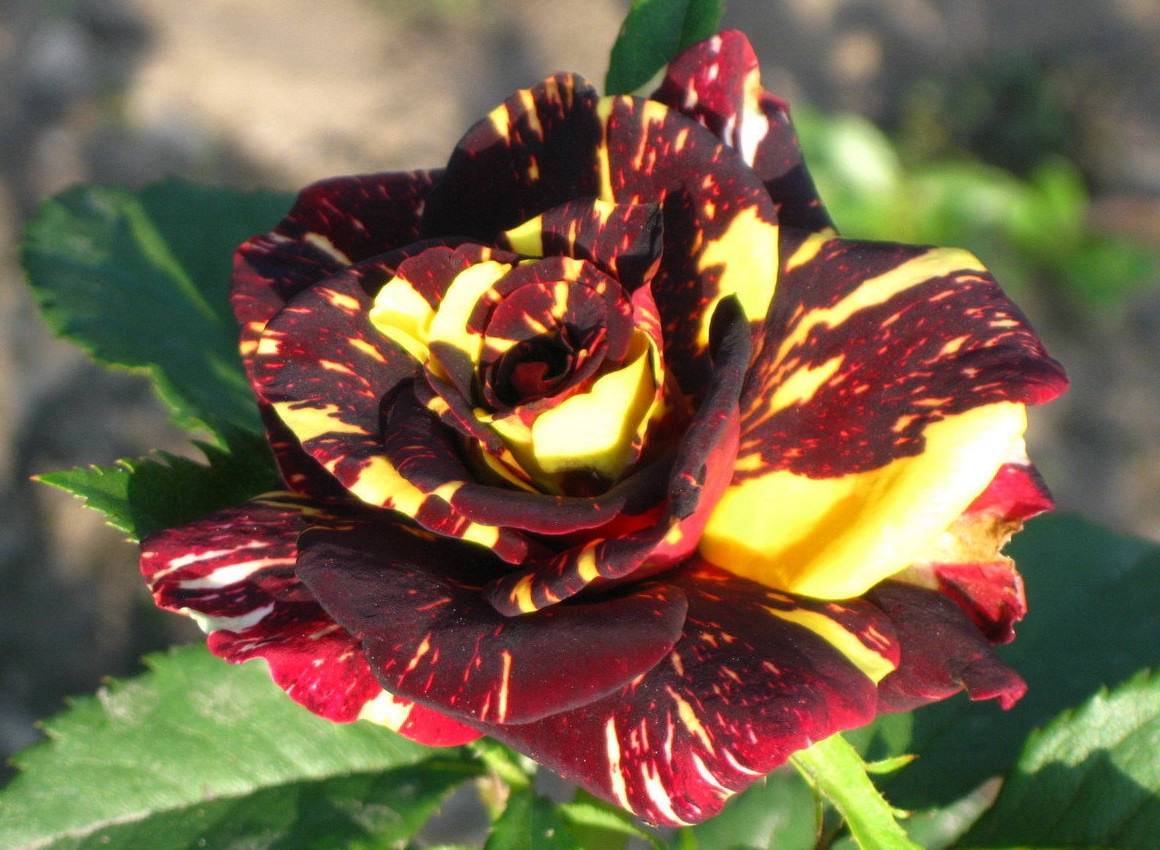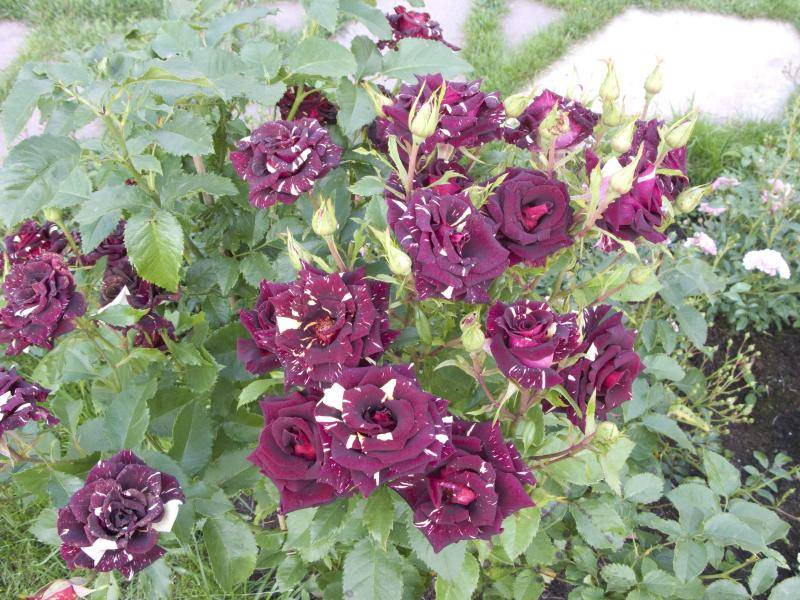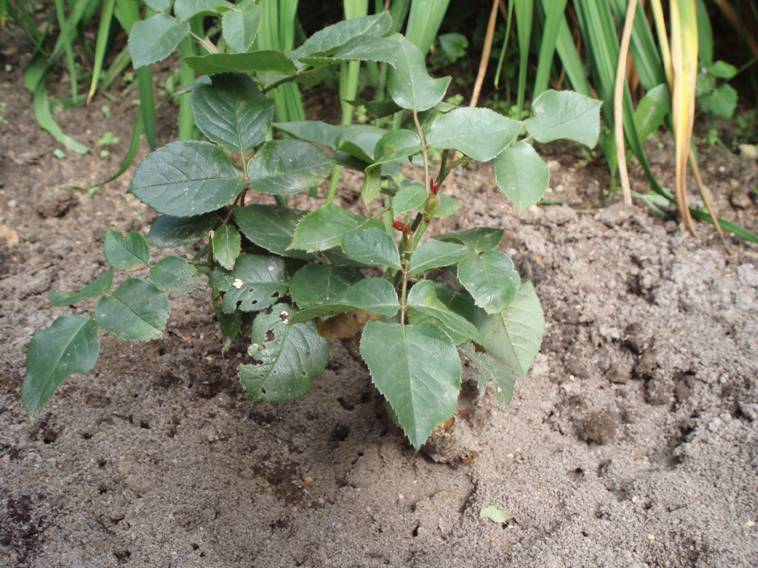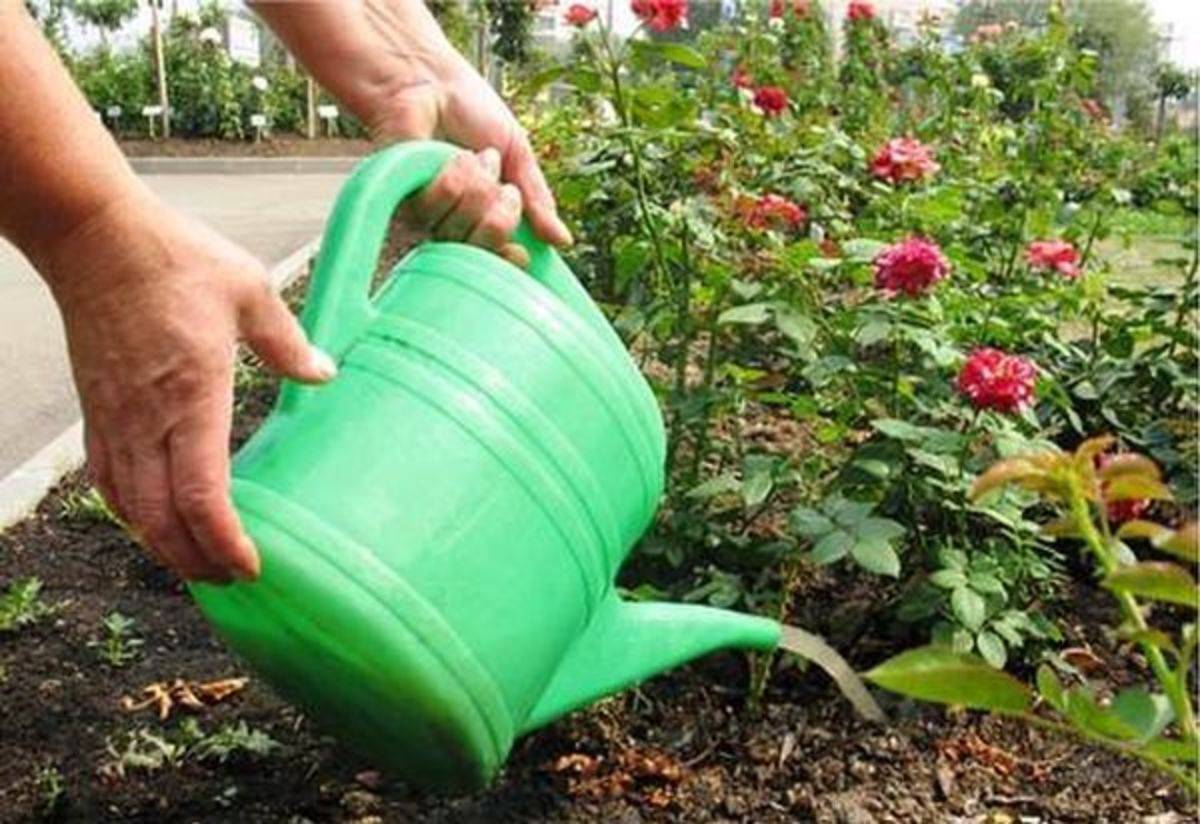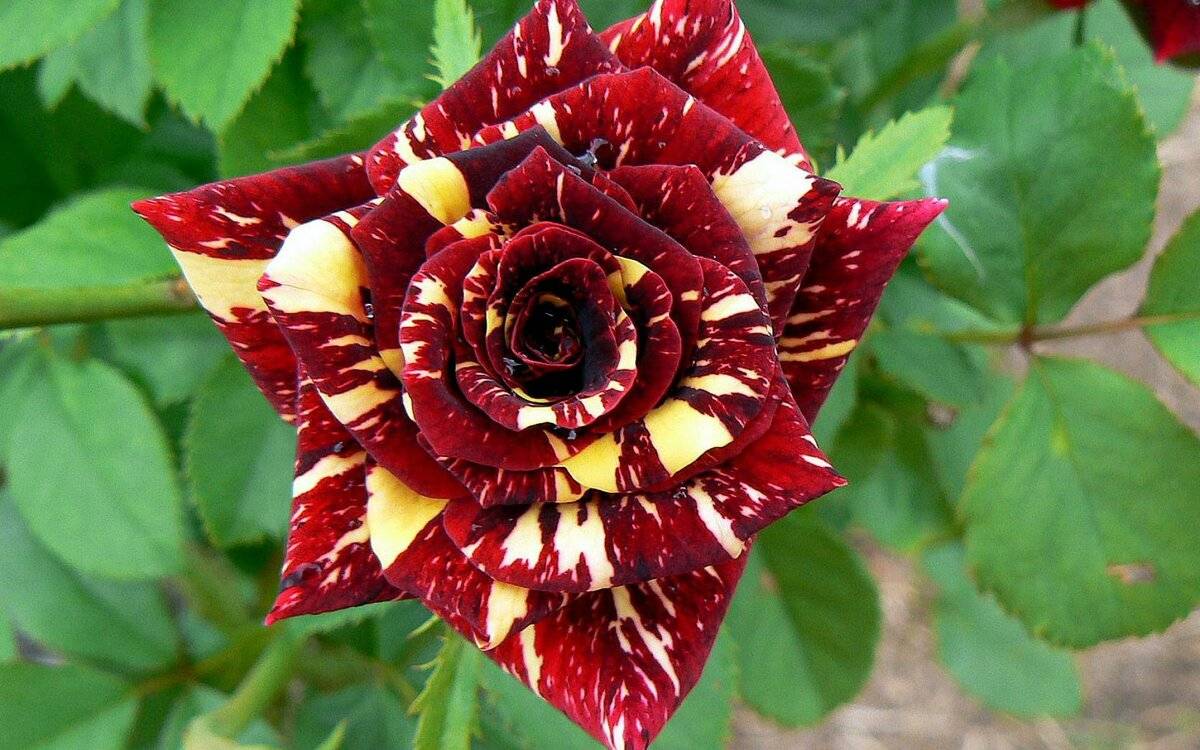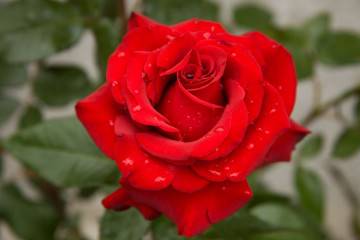Rosa Hocus pocus (Hocus pocus) - description of varietal culture
Content:
Fokus Pokus hybrid variety, bred by German breeders by crossing remontant and tea roses. The German School of Rose Breeding is recognized all over the world. The varieties they have obtained are always popular.
Brief description and characteristics
Hocus Pocus is a representative of the floribunda group of varieties. The variety is distinguished by a very original and unusual color. Deep burgundy rose petals are dotted with golden vertical strokes and stripes. Interestingly, the buds on the same bush can be completely different colors, two of the same can not be found. All possible ratios of wine red and yellow are presented: from completely burgundy flowers to almost yellow. There are corollas, divided in half - one half is dark, the other is light. In contrast to the external brightness, the aroma of rose is light, but very pleasant.
The bush is low, up to 60 cm, compact, up to 40 cm in diameter. It has many side branches, dense dark green foliage. There are few thorns. On one stem, one bud is most often formed, only sometimes several buds appear. At the peak of flowering, one bush can be decorated with 15 roses.
Advantages and disadvantages of the variety
Like any other, the Hocus pocus rose has its own advantages and disadvantages.
Pros:
- compactness;
- bright original color;
- tolerates winters well;
- in the cut costs up to 16 days;
- resistant to powdery mildew.
Minuses:
- not very suitable for bouquets;
- suffers from black spot;
- in rainy weather, the buds do not open.
Use in landscape design
The creators of the hybrid wanted to see it as a cut, but not long enough flower stalks and their inconvenient location turned it into a decoration of parks and gardens.
With its vibrant colors and rich foliage, the Hocus pocus rose will brighten any landscape. Ideal for:
- registration of the entrance group;
- use in curbs;
- as a specimen plant;
- in combination with conifers, lilacs, acacia.
Growing a flower
Proper planting and site selection are important factors for abundant flowering.
The best option is to plant seedlings. They should be purchased from garden centers or specialty stores. This way you can protect yourself and the rose from re-grading, diseases and pests.
Saplings Focus bite are planted in spring. The soil temperature must be at least 10 ° C.
Seat selection
The landing site must meet the following requirements:
- light and well ventilated;
- minimum amount of direct sunlight. Several hours of partial shade for a floribunda are needed;
- the occurrence of groundwater is not higher than 1 m;
- lack of drafts;
- the optimal soil is black soil, but fertilized loam is suitable;
- the soil is loose, structured.
How to prepare the soil and flower for planting
Landing is a responsible event. An improperly planted flower can never bloom, and in the worst case, it can die.
If planting is planned in the spring, the soil and holes are prepared in the fall, and, conversely, for the autumn - in the spring.
Procedure:
- Remove weeds in the area designated for planting.
- Dig it to a depth of 50 cm.
- Apply fertilizers: 2 kg of compost (manure) for each bush or complex fertilizer according to the instructions.
- Digging holes 60 cm in diameter and 50 in depth.
The plant itself is prepared as follows:
- 10 hours before planting, the roots are immersed in water.
- Immediately before planting, the roots are shortened by 20 cm, the damaged ones are removed.
- Dry, damaged shoots are cut off.
- On strong, healthy stems 5 buds are left, on weaker ones 3. The length of shoots should not exceed 20 cm.
- The roots are moistened in a solution of mullein with clay (1: 3) with the addition of heteroauxin (1 tablet per 10 l of water).
Planting procedure step by step
When rooting roses, the following steps must be followed:
- Lower the seedling into the hole and spread the roots. The inoculation should be 2-3 cm below ground level.
- Cover the root system of the rose with prepared soil.
- Water abundantly.
- Top up the soil.
- Apply for 10-12 days.
Plant care
Caring for a rose Focus without frills, but she will not tolerate irresponsibility.
Watering rules and humidity
Water as the soil dries: more often in hot dry weather, less often in rainy weather. Watering is carried out after sunset or early in the morning so that drops of water falling on the petals do not leave burns.
Top dressing and soil quality
Fertilization scheme:
- immediately after the snow melts (March);
- during the awakening of the kidneys (April);
- at the beginning of flowering (late May - early June);
- at the peak of flowering (July).
They use complex fertilizers specially designed for roses.
Pruning and replanting
Before the onset of cold weather, the bush is cut off almost completely. Form Hocus pocus in the spring, after the removal of winter shelters. Sick, dry, thriving shoots are removed as needed.
Features of wintering a flower
This variety is winter-hardy, but, nevertheless, in the conditions of Central Russia, it requires shelter. The bush is covered with agrofibre and spruce branches on top.
Blooming rose
Hocus pocus blooms in the second summer after planting. The variety is referred to as re-flowering varieties, that is, during the flowering period, you can see several waves of bud opening. Each flower pleases the eye for about 2 weeks, after which the bud is removed to allow others to open.
A period of activity and rest
This rose begins to bloom at the end of May and continues until cool weather sets in. In the Middle Lane, this is until the end of September, and in the Crimea and Krasnodar Territory - until November.
Care during and after flowering
You need to take care of a blooming rose as follows. During flowering, nitrogen is removed from the dressings. Organic fertilizers are effective (1 liter of mullein per 10 liters of water). Faded shoots are cut off above the bud.
After the end of flowering, it is forbidden to apply nitrogen fertilizers to enable the plant to prepare for wintering.
What to do if it does not bloom
Hocus pocus may not bloom for the following reasons:
- the plant is too young, it is not yet a year old. Planted in autumn, it does not bloom next summer. You just need to be patient;
- unsuitable place for planting a bush. The rose is dark, cold, too humid. Transplant will solve the problem;
- incorrect cropping. In the spring, the shoots were cut too much or the flourishing buds were not removed, which slow down the development of new ones;
- violation of agricultural technology. Delay in watering, fertilization - all this will lead to a lack of flowers;
- root shoots;
- diseases and pests;
- the bush has aged and requires rejuvenation.
Flower propagation
The best way is grafting.
Planting material is harvested when the shoots of the rose begin to lignify. The upper cut of the cutting should be straight and located 1 cm above the bud, the lower cut at an angle of 45 °.
Rooting procedure for Rose cuttings Focus:
- Free the lower part of the cutting from thorns and leaves.
- Treat the cut with root.
- To deepen the cutting into the soil 15 cm. The distance between the branches should be kept 15-30 cm.
- Cover the cuttings with plastic wrap or spunbond.
Cuttings need to be regularly watered, ventilated, and fed. The buds that appear on them must be removed. They are insulated for the winter. Transplanted to a permanent place in the third year after disembarkation.
Diseases, pests and ways to control them
Information about the main problems is presented in the table:
| Pest / disease | Description | Prevention and control measures |
| Stem cancer | Brown spots on shoots | Cut and burn diseased stems, treat the bush with copper sulfate |
| Aphid | Green, brown, black sucking insects | Insecticides, soap solution |
| Powdery mildew | White bloom on the leaves, turns gray over time | The affected shoots are burned immediately after cutting, the soil is dug up, the rose is treated with a fungicide |
| Rust | Bright orange fluffy spots on the leaves, turn black by autumn | |
| Spider mite | Leaves and buds are covered with cobwebs | Acaricides, damaged parts of the plant destroy |
| Shield | Small insects covered with a green or brown shield on young stems | Mechanical removal followed by treatment with mineral oil or insecticides |
Growing a Floribunda Rose Hocus Pocus is like a lottery - you never know what flowers it will please. Only, unlike gambling, there are no losers - the variety is always beautiful.
